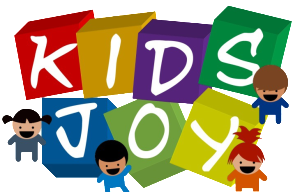In the words of Picasso, ‘Every child is an artist.’ And it’s our responsibility as parents to provide the opportunity for them to explore the world of art.
In the previous post, we looked at 6 painting activities. Here are a few more ideas for painting with your children.
7. String Painting
Things Required: String, Plate, Paints, Paper
Method: Put some paint on a plate. Cut a long piece of string and put it in the paint. Make sure it’s completely covered in paint. Fold the paper in half and then open it out. Put one end of the string one corner of the paper and then make a design and place it all around the paper. (But only on one side). Make sure one piece of the string is sticking out of the paper. Fold the paper in half again, hold it with one hand and then slowly move the string inside the paper, till you finally pull it out. Open the paper out and watch your child’s joy when he/she sees the design created!

8. Spray Painting
Things Required: Toothbrush, Plate, Paints, Paper
Method: Mix the paint with a little water. Dip the toothbrush in the paint and then move your fingers over the brush to make the paint spray over the paper. You can use different colours to make it more fun.

9. Vegetable Printing
Things Required: Vegetables (lady finger, onion, lime, potato, cucumber, cauliflower, etc.) Plate, Paints, Paper
Method: Mix the paint with a little water on a plate. Cut the vegetables into pieces that the child can easily hold in their hand. Dip it in the paint and let the child make vegetables prints all over the paper. You can make beautiful artwork with method. For example, you can print lady fingers as flowers, and then draw some grass around later with a crayon. Another fun thing you can do with a potato is to cut the base into shapes to create some stamps.

10. Bubble Painting
Things Required: A medium sized bowl, Paints, Dishwash soap, Straw, Paper
Method: In the bowl, put a few drops of soap, a little paint and some water. Mix it together. Ask your child to blow into the bowl using the straw. (Make sure they know how to blow out and not suck the mixture into their mouth!). Once a lot of bubbles are formed, gently place the paper over the bowl. It should just touch the surface of the bubbles, not the water. Slowly lift it off and allow it to dry. You will see some beautiful bubble prints on the paper.

11. Finger Painting
Things Required: Plate, Paints, Paper
Method: Put some paint on the plate. Let your child dip their finger in the paint and make fingerprints on the paper. Finger painting has endless potential, you can either create pictures, fill up a colouring page, or just let your child create whatever they want.

12. Painting with Salt
Things Required: Watercolour Paint, Paintbrush, Paper, Salt
Method: Paint splotches with watercolour all over the paper. While the paint is still wet, generously sprinkle salt over and leave to dry. Once dry, brush the salt off. The salt absorbs the paint, and leaves a pretty design on the paper.

13. Shaving Foam Painting
Things Required: Plate or tray with a little depth, Shaving foam, Thick paper, Paint/ Food colouring, Toothpick, Knife, Dropper (optional)
Method: Spray some shaving foam on the paper. Put a few drops of paint. Let your child mix it using a toothpick. Carefully place the paper over the shaving foam. Lift it off and using a knife, scrape away the shaving foam. The paint on the paper will form some interesting patterns!
Click here to read more about this activity.

14. Free Painting
Things Required: Paint, Plate, Paintbrush
Method: Give your child a paper and let them do whatever they want! I generally end all my painting activities with free painting. Structured activities are great, but it’s also important for children to have space to express their own creativity and make whatever they want. Avoid giving direction or discouraging your child. Even it looks like one brown splotch of mess at the end, it’s ok. It is their own artwork, and over the years, they will develop their own style. But it’s essential to create the environment for your child’s creativity to flourish.



Recent Comments